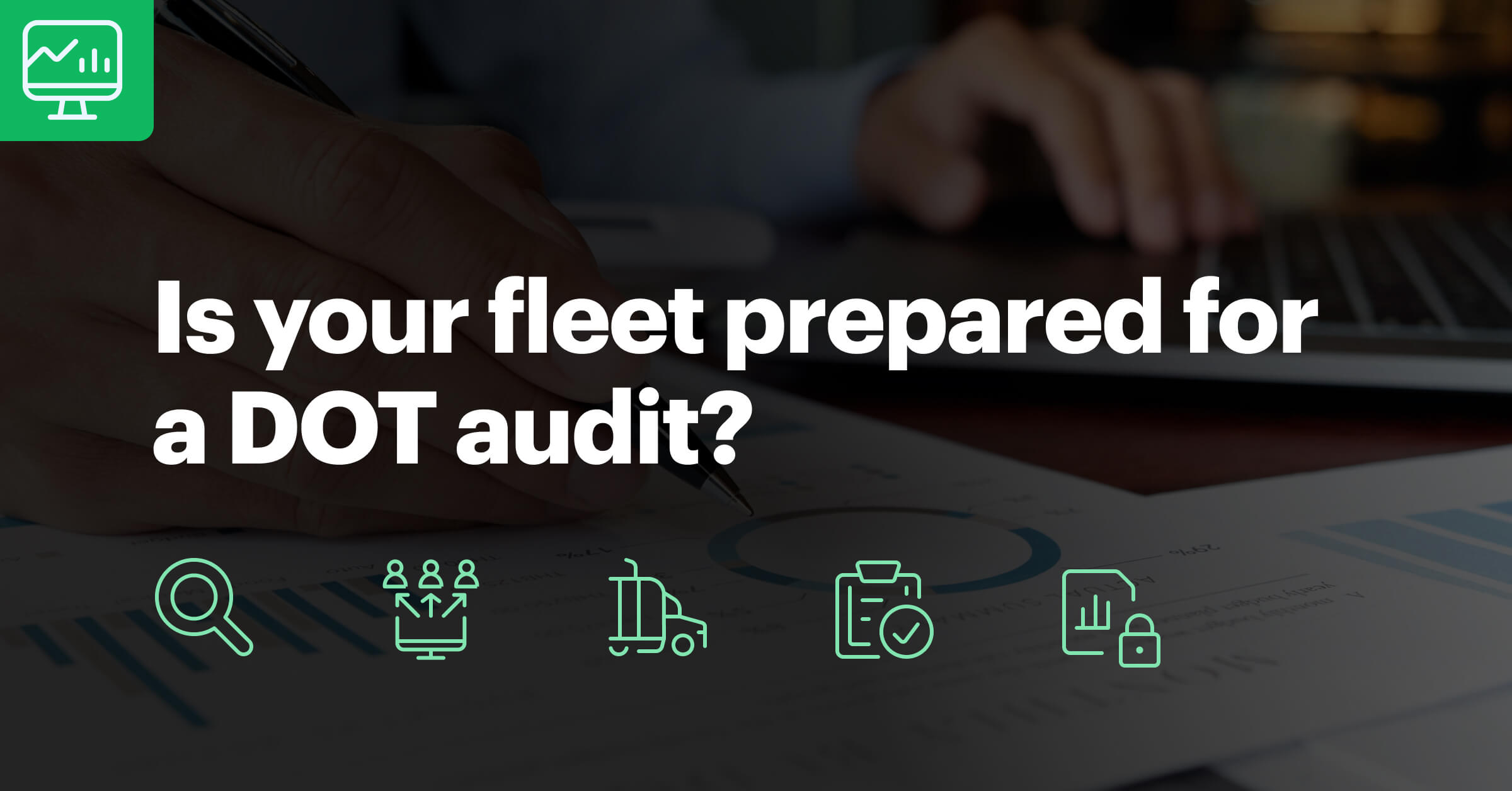A Department of Transportation (DOT) audit can be unexpected, but your fleet should always be prepared. Keeping fleet records and using software to maintain data is critical to ensure passing the DOT audit.

How to Pass a DOT Audit
You might be wondering, can the DOT audit my fleet? It’s common for trucking fleets to go through a DOT audit, but they are not the only ones. If your business transports passengers or freight, you could be subject to a DOT audit.
Remaining organized is the key to passing. To prepare your fleet for a DOT audit, you’ll want to leverage the power of fleet management software like Fleetio.
Fleet software automates processes and allows you to track the necessary data to ensure compliance. Let’s go over some of the most important aspects to monitor and help you pass a DOT audit.
Vehicle Inspection Forms
Completing daily vehicle inspection reports (DVIR) not only provides valuable insight into the health of your assets, but it also is necessary to remain in regulatory compliance.
Always be sure to evaluate your forms according to applicable FMCSA regulations. Including applicable verbiage from the FMCSA Handbook in descriptions and instructions are encouraged to reiterate the intent of an inspection item to satisfy requirements.
Electronic vehicle daily inspection reports (eDVIR) are the best solution. They require the use of a mobile device and allow operators to quickly, and accurately input necessary vehicle data. They also provide fleet managers visibility to ensure the forms are being completed to meet the necessary standards.
If you used paper inspections in the past, it’s best to copy exact items and descriptions to maintain consistency. Refer to the Federal Motor Carrier Safety Administration (FMCSA) section 396.11(a) for requirements.
Inspection forms can be configured to help your drivers quickly notify you when they undergo a roadside inspection, receive any violations, and instantly provide pictures of the inspection.
You can also maintain records for trailers and other equipment in fleet management software like Fleetio. This extremely beneficial to track issues and repairs on all assets, not just vehicles.
Fleetio Tip: In accordance with section 396.11(b)(2), you will need to have your company name and DOT number on the printable version. You can add a “Section” Inspection Item to the top of your form to satisfy this requirement.
Vehicle Issues and Workflows
Issues provide you the opportunity to track problems in your fleet, resolve them with service and build concise paper trails on issue resolution. Furthermore, if you use the “create an issue” workflow, it adds a layer to your inspection that allows drivers to verify that repairs were made and the vehicle is now operational.
Utilizing workflows to automatically create issues for failed items will help you keep track of all of your failed DVIR items and give you great workflows and paper trails.
You can also use workflows to change vehicle statuses and send emails for specific, critical item failures to help you keep your fleet from operating with problems that could cause violations in a roadside inspection.
Leveraging software to manage workflows makes it easier to prove your fleet satisfies the corrective action requirements found in section 396.11(a)(3).
Consider Annual DOT Inspections
It’s best to practice annual DOT inspections on your fleet assets. In fact, some states mandate an annual or “periodic” inspection program for commercial vehicles.
Fleetio inspections are a great solution to ensure all items are completed to fulfill the requirements. Issues, repairs and even costs will all be documented while tying in seamlessly with your work order process.
Utilizing the data from inspection and streamlining workflows through fleet management software allows you to stay on top of issues. If you are creating your forms and policies from scratch or want to review, be sure to review the requirements in FMCSA 396.17 - 396.25 to avoid costly citations.
When it comes to registration, you can use vehicle-renewal- reminders to make sure that all renewals are completed on time. You can create schedules for insurance and Transportation Worker Identification Credentials (TWIC) renewals, and all other time-sensitive deadlines.
Fleet Maintenance and Service Tasks
Effectively managing issues not only aids in passing audits but also in reducing costly downtime. Using fleet software for work orders provides visibility into the resolution of vehicle issues and ensures standards.
You’ll be able to track repairs in detail, including what parts were used, who completed the service and what were the costs. In the event of a DOT audit, you may be required to provide the inspecting technician’s certification documents As required by FMCSA Section 211. Request these from your vendors and the records can be stored in your fleet management software database.
To determine when is the best time to service vehicles, you can set up reminders based on mileage or time. These can be sent via email notification and will produce optimal preventive maintenance and reduce the risk of unplanned downtime.
When it comes to keeping track of all your vehicle services, there’s more to it than meeting regulatory compliance. Using fleet management software like Fleetio allows you to manage your entire maintenance workflow, track and approve repairs and monitor costs while providing a solution to prepare you for a dot audit.
Fleetio’s software is a convenient and easy to use solution to manage your fleet records and operations. Start your free trial or request a demo with one of our experts today!
This post was co-authored by Josh Phillips, Customer Success Manager at Fleetio.




